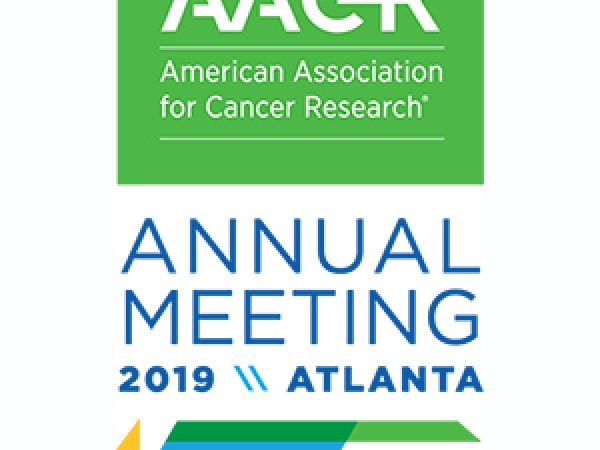Annual Meeting 2022: Uncovering the Genetic Vulnerabilities of Pediatric Cancers
Although childhood cancer is rare, it represents the leading cause of death by disease in children in developed countries. Despite dramatic advancements in recent decades in the treatment of some forms of pediatric cancers, such as acute lymphoblastic leukemia, outcomes remain poor for other cancer types, such as brain cancer, especially in low- and middle-income countries. In addition, childhood cancer survivors have a higher risk of suffering from long-term health conditions related to the disease or its treatment.
One challenge in developing targeted therapies for pediatric cancers is that the biology and underlying genetic alterations are, for the most part, different from those found in adult cancers and still largely unknown, as fewer studies have focused on unraveling the genetic makeup of pediatric malignancies.
In addition, cancers that arise in children have lower somatic mutation rates than adult tumors, leading to the hypothesis that there would also be fewer genetic vulnerabilities to target.
However, it is becoming increasingly evident that oncogenic mutations that serve as genetic drivers represent only part of the story, and that cancer cells possess other types of genetic vulnerabilities, or dependencies, that could be exploited to kill them.
In a symposium at the AACR Annual Meeting 2022, presenters discussed approaches to profile genetic dependencies in cancer, with a focus on pediatric cancers.
William C. Hahn, MD, PhD, William Rosenberg Professor of Medicine at Harvard Medical School and Dana-Farber Cancer Institute, noted that, using a wide variety of genomic and proteomic technologies, researchers have built a comprehensive catalog of somatic alterations in many of the major cancer types, which provided a path toward targeted therapies.
While this map is fundamental for our understanding of cancer biology and developing therapeutics, it doesn’t allow researchers to find treatments for many patients, especially for pediatric patients, or to conceptualize new categories of targeted therapy, he said.

MD, PhD
Hahn compared this catalog of genetic alterations to a list of the parts that form a car engine: Simply knowing how many parts there are and how many times they are broken would not be sufficient for an engineer to build the engine. Similarly, having a list of genetic alterations isn’t enough to understand how tumors arise and interact with the entire organism. “Figuring out the function of the genes is really important too,” Hahn said, arguing that the field needs to move beyond the “mutated oncogene” paradigm.
To this end, he and collaborators have performed systematic functional screens in more than a thousand cancer cell models by depleting the expression of individual genes to study the effects of each genetic perturbation on the fitness of the cells. This strategy allowed for the identification of genes that, even though not mutated, are essential for cancer cell proliferation and survival and could represent new therapeutic targets to guide the development of precision treatments.
The information obtained through this effort was combined in the Broad Institute’s Cancer Dependency Map (DepMap) to define the landscape of targets for therapeutic development and identify predictors of response to therapy.

Building on this work in adult cancers, Broad Institute researchers led by Kimberly Stegmaier, MD, professor of pediatrics at Harvard Medical School and Ted Williams Investigator at Dana-Farber Cancer Institute, and Francisca Vazquez, PhD, director of the Cancer Dependency Map project, developed a pediatric cancer dependency map to identify vulnerabilities that could inform new hypotheses for the development of treatments for childhood cancers and shed light on mechanisms of action.
Stegmaier noted that, at best, only 20-30 percent of children with cancer present a clinically actionable mutation that can be targeted with the current armamentarium of drugs, and most of the known molecular alterations are difficult to target.
Using CRISPR-Cas9 technology to silence the expression of approximately 18,000 human genes, the researchers conducted a loss-of-function screening on 82 solid tumor and brain tumor cell lines representing 13 pediatric tumor types. They identified genes that when depleted result in deleterious effects to the cells and could, therefore, represent new targets.
The resulting map is publicly available to the scientific community. The effort was discussed in an article published in the AACR journal Cancer Discovery.
One of the key findings of the study was that, despite lower mutational burden, pediatric cancers possess as many genetic dependencies as adult cancers, suggesting the existence of more therapeutic targets than previously expected. Furthermore, these targets would not be identified through mutation analysis.
The dependencies were classified as essential (or pan-lethal) or selective. Essential dependencies were defined as targets required for survival of all the cell lines included in the study, whereas selective dependencies were genes required for growth of a subset of cell lines. The researchers focused on selective dependencies for further analysis.
Stegmaier discussed some examples of the type of studies that were made possible through the pediatric cancer dependency map. While some gene mutations, such as in ALK and BRAF, were identified in the screening and predicted dependencies, another mechanism through which a gene could be essential is through paralog interaction.
Paralogs are genes that arise from duplication events and have similar structure and related functions. The team found that cell lines that have physiologically low expression of one paralog are dependent on the other paralog.
One such example is NTX1, a cofactor of the mRNA nuclear export protein NXF1. In a Cancer Discovery paper, the lab described a synthetic lethal paralog relationship between NTX1 and NTX2, whereby low NXT2 paralog expression predicted NXT1 dependency in neuroblastoma.
In the absence of both paralogs, the common binding partner NXF1 was degraded, and the cells could not effectively transport essential RNAs, resulting in apoptosis.
Stegmaier noted that a number of childhood cancers with low XNT2 expression are strongly dependent on NXT1, contrary to most adult cancers. The team is now interested in identifying ways to inhibit NXT1 pharmacologically.
Another gene dependency identified in both adult and pediatric brain cancer models was vaccinia-related kinase 1 (VRK1).
Hahn’s team, in collaboration with other Broad Institute labs, found that VRK1 dependency correlated with loss of expression of its VRK2 paralog, and that low VRK2 expression was frequent in in human cancers of the nervous system.
They also observed that VRK1 deletion in cells induced DNA damage associated with altered phosphorylation of a VRK1 target protein that is necessary for proper chromosome segregation during mitosis.
In vivo, turning off VRK1 expression resulted in tumor regression in mice bearing glioblastoma, demonstrating the potential therapeutic value of this approach, which could be complemented by the assessment of VRK2 expression levels as a biomarker of response.
Hahn explained that the new frontier of the DepMap initiative is expanding beyond cell lines and introducing 3D organoid models that represent different types of tumors and complement the observations that were made in cells.
The researchers are hopeful that the insights revealed through the discovery of the genetic vulnerabilities of pediatric cancers will open up new therapeutic opportunities.



